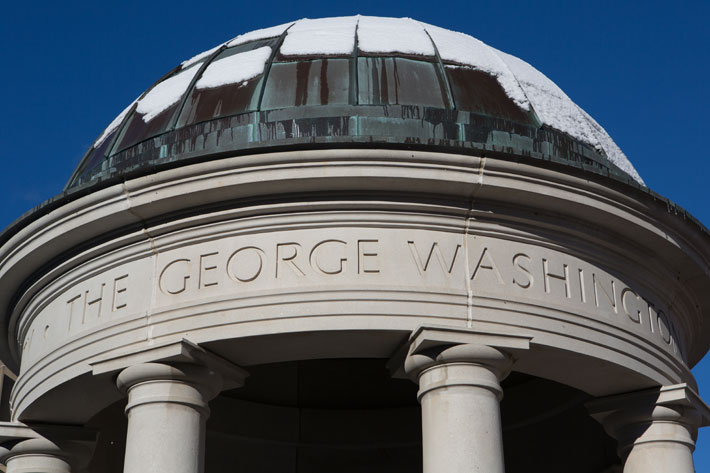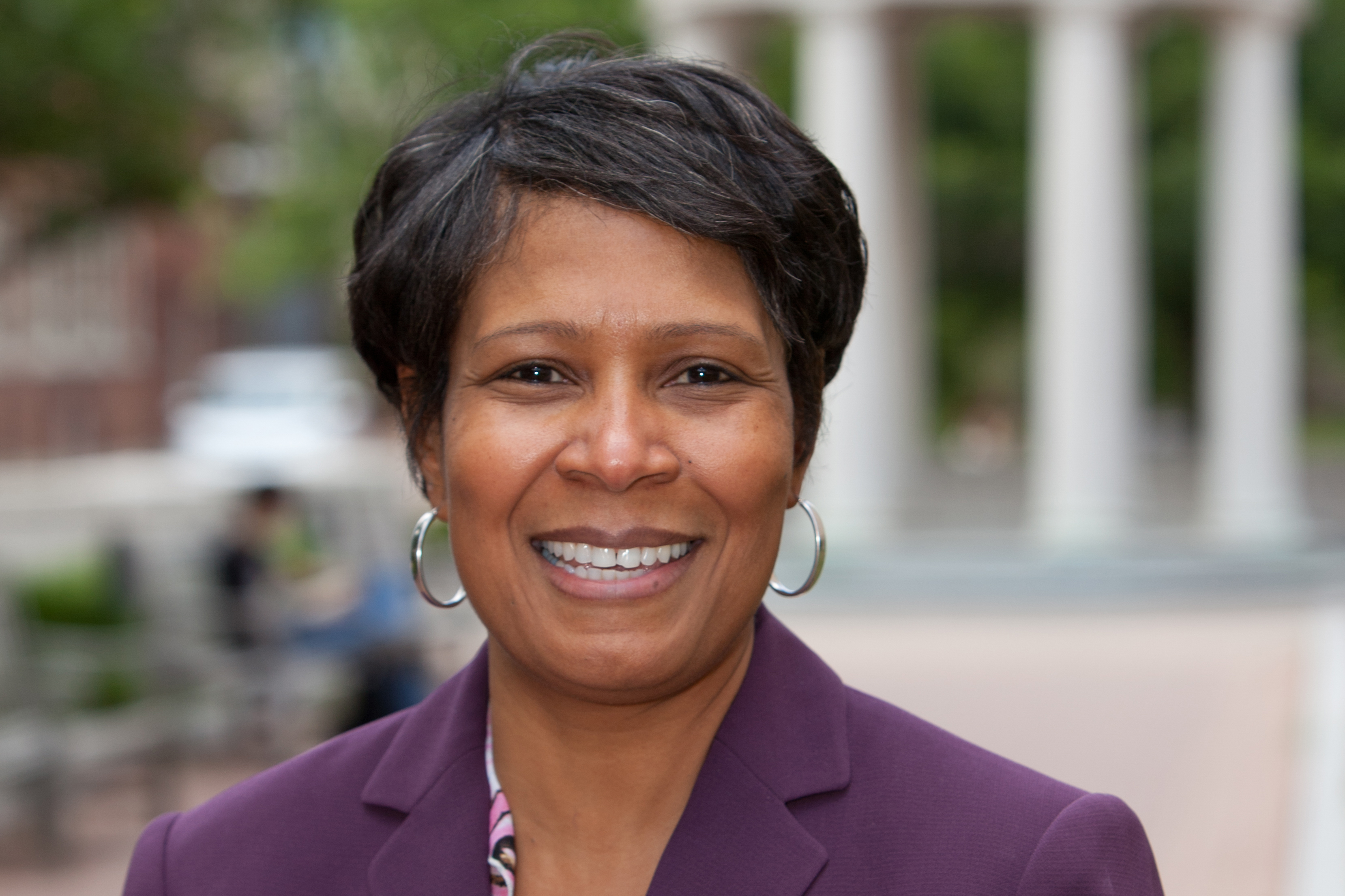By James Irwin
As colleges across the country continue to take measures to combat sexual assault, survey results released Wednesday by the George Washington University reveal opinions among students regarding campus climate, safety and policies—data that will help shape university programming on the topic.
Four of 10 undergraduates and almost five out of 10 graduate students said GW has been effective in creating a climate free from unwanted sexual behavior, according to results from the university’s 2014 Unwanted Sexual Behavior survey.
Fifteen percent of undergraduate students and 6 percent of graduate students said the university was not effective in creating a climate free from unwanted sexual behavior, according to the survey. About 45 percent of undergraduates and graduate students said they were “neutral” when asked to rate how effectively GW creates a climate free from unwanted sexual behavior.
The Office of Survey Research and Analysis administered the 40-question survey of 713 randomly selected students in April 2014 at the request of Vice Provost for Diversity and Inclusion Terri Harris Reed.
The survey compiled student responses and comments on several topics, including opinions on the university’s policies regarding sexual assault prevention and response, frequency of unwanted sexual incidents on campus and raising awareness of sexual harassment issues.
Combatting sexual assault on college campuses has become a priority for the White House. George Washington President Steven Knapp, Student Association President Nick Gumas and other university officials joined President Obama at the White House last September for the launch of a campaign to raise awareness on the issue. The U.S. Department of Education has urged universities to conduct what it calls “climate surveys” to help measure the extent of the problem on college campuses. The White House has said it will consider making such surveys mandatory for universities in the future.
Dr. Reed said GW would support “a well-thought out mandate” for surveys designed taking into account best practices for developing the survey and sharing its results. In the meantime, Dr. Reed said, this survey “will help us update our agenda and identify priorities.”
“You need to understand the extent of the problem, the nature of the problem and solicit ideas for improvement,” she said. “Engaging the entire community is essential if we are going to achieve our aspirations.”
According to the survey, students feel relatively safe on campus. More than 90 percent of undergraduates said the GW campus was either “very safe” or “safe” in the morning, afternoon and evening. At night, 55 percent of undergraduates said the campus was “very safe” or “safe.” Another 36 percent described the campus as “somewhat safe.” Nine percent said the campus was “not safe.”
“The survey confirms some things we already know,” Dr. Reed said. “But it also shows us that ‘fixing’ this issue will not be straightforward. There is not a shared understanding of the issues or a single best approach to prevent incidents or respond to incidents more effectively."
Personal Experiences
Twenty-two percent of undergraduate students personally experienced what they would consider to be sexual harassment, sexual violence, dating/domestic violence or stalking while enrolled at GW, according to the survey, and 18 percent of undergraduates perpetrated such actions.
Thirty-six percent of upper-class female and 35 percent of LGBT undergraduate students reported experiencing unwanted sexual behavior—such as unwanted sexual comments, jokes or looks, sexual pictures or notes—the highest rate among those surveyed. The two groups also reported experiencing forced sexual encounters at the highest rates, each at 31 percent — with a plurality indicating they were touched, grabbed or pinched by someone in an unwanted sexual way.
Jane Stapleton, co-director of Prevention Innovations Research and Practices for Ending Violence against Women at the University of New Hampshire, said the more aware people are of an issue like unwanted sexual behavior, the more likely they are to identify experiences where they were victims and report them.
“Once you start raising awareness within communities, the reporting rates actually increase,” said Ms. Stapleton, a developer of the Know Your Power Bystander Intervention social marketing campaign. “It doesn’t necessarily mean the incidents have increased, it just means you have a whole lot of people looking back on their experiences and saying, ‘Oh my gosh, my partner was abusive to me, and until I had this awareness I never would have labeled it as such.’”
Reporting Unwanted Behaviors
Detail in education programs and communication messages is important, Ms. Stapleton said, because it brings awareness out of the abstract. At GW, the majority of students—80 percent of undergraduate and 66 percent of graduate students—said they are aware of university policies regarding sexual harassment. Only 31 percent of undergraduate and 12 percent of graduate students reported participating in programming related to these policies.
A high number of respondents—80 percent—said they did not know how to contact one of GW's Title IX coordinators or the Sexual Assault Response Consultative Team. Dr. Reed said the new Title IX coordinator, Rory Muhammad, will work to address this challenge. As that office is expanded, Mr. Muhammad plans to make it known as the point of contact to report and monitor all complaints. The university’s Haven website houses resources on and off campus, along with options and information to assist regarding incidents of harassment and abuse.
About 67 percent of students said they would report improper sexual behavior if it occurred. But far fewer students reported improper behavior that they experienced or that was experienced by someone they know, according to the survey.
“For students, the incidents frequently involve people they know. The victim and perpetrator can have similar friends and social circles,” Dr. Reed said. “Because they are living and learning together it affects their day-to-day experiences. That makes it incredibly difficult to report.”
The difference between having awareness of a policy and understanding what it covers, how it is enforced and having a willingness to report it—is one the university is working to improve, Dr. Reed said. She said the survey creates a “baseline of data” that will help GW find the areas of greatest need in working to prevent unwanted sexual behavior. Those needs, she said, are many.
GW, Ms. Stapleton said, isn’t alone. Her research team conducts unwanted sexual experience surveys every five years. At colleges around the country, she said, there is a difficulty in creating targeted programming for so many specific university communities. There also is a range of behavior—spanning from sexist comments to forced sexual acts—along the continuum of unwanted sexual behavior. Many of those events, she said, are difficult to identify as sexual misconduct in a timely manner.
The most frequent incidents are also the ones with lower recognition, she said.
“It’s quite common that college students hear a sexist joke or remark,” she said. “The reality is those things that have low recognition actually create a climate that in some ways camouflages the behavior of perpetrators. It’s like normalized behavior, and we see it everywhere—on TV, in movies, on social media. It’s not surprising that there is a low awareness that those individual acts constitute, at the very least, misdemeanor sexual assault and sexual misconduct.”
Improving Policy and Procedure
A majority of students—64 percent of undergraduate and 52 percent of graduate students—said the university should do more to raise awareness of sexual harassment issues. An analysis of narrative responses included in Appendix B of the survey report cited a need for more information in more places regarding sexual assault prevention, including boilerplate language added to syllabi. They often cited a need to define sexual harassment and university policies on sexual misconduct in clear, specific terms.
Generally, they suggested the university provide more student training on the issue and make it mandatory, increase, improve and expand communication efforts, de-stigmatize those who report unwanted sexual behavior and change the ingrained student culture.
“It’s clear we need to do more to raise education and awareness,” said Mr. Muhammad, who started in his position last Nov. 10. “We need to have more targeted efforts, both with the content of our programming and the delivery of it to specific communities on campus.”
Mr. Muhammad said he will lead the effort in partnership with the Title IX office staff, assistant Title IX coordinators, Office of Victim Services, the George Washington University Police Department, several units of the Division of Student Affairs and student advocates. The newly created Committee on Sexual Assault Prevention and Response, which includes students and faculty, will advise them.
Backed by data from the survey, sexual assault prevention programs on campus can be strengthened in several ways, Mr. Muhammad said. GW can create more frequent programming and use multiple methods geared toward specific populations that address barriers to reporting unwanted behavior. These programs would provide, for example, legal definitions and penalties for sexual assault, he said. There must be more visibility, he said, so students are aware of the policies, protections and programs in place to prevent sexual harassment and violence and support survivors.
Students are more likely to report unwanted sexual behavior to friends and family—91 percent of undergraduate students said they would discuss an incident of unwanted behavior with a friend but only 32 percent said they would discuss the incident with the GW police, according to survey results. The university, Dr. Reed said, should study providing information and resources not only during parent orientation, but also via the parents’ portal on the gwu.edu website. Materials would serve to educate what constitutes unacceptable or illegal behavior and inform families about support services available to students.
In order to reduce occurrences of sexual harassment, sexual violence, dating/domestic violence and stalking at GW, university training also must take into account that perpetrators are both those with connections to GW and those who have no official connection with the university, Dr. Reed said. According to the survey, unwanted sexual behavior was nearly as likely to be perpetrated against undergraduates—and more likely to be perpetrated against graduate students—by someone unaffiliated with GW as it was to be perpetrated by a GW student.
Future surveys on the topic, Dr. Reed added, will ask when incidents occurred, which will inform the university of the timing and frequency of incidents and will help shape prevention education.





